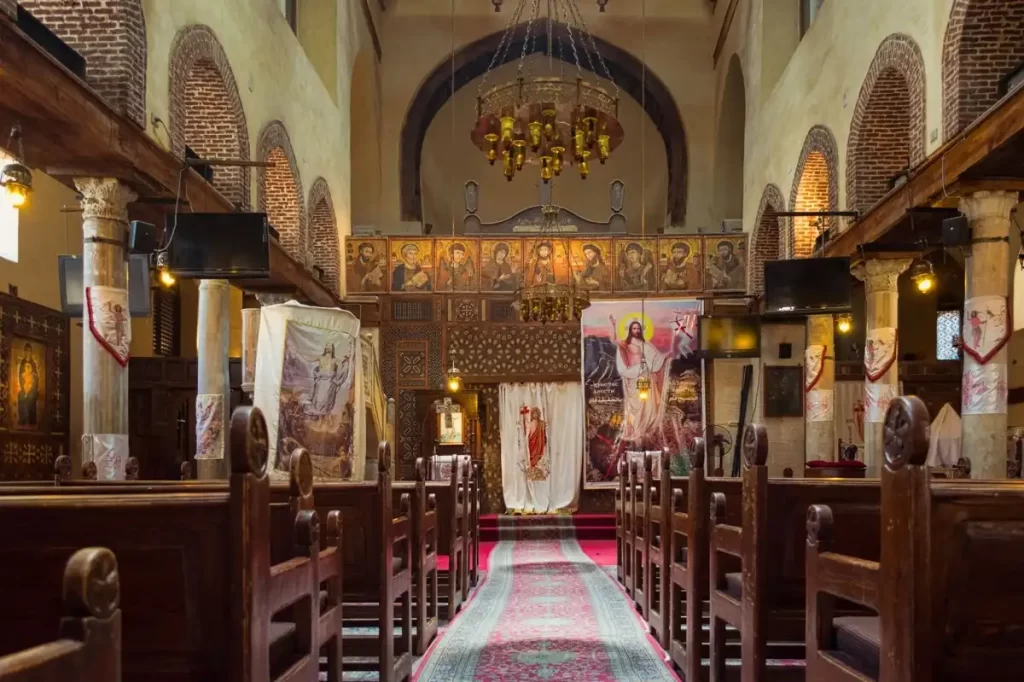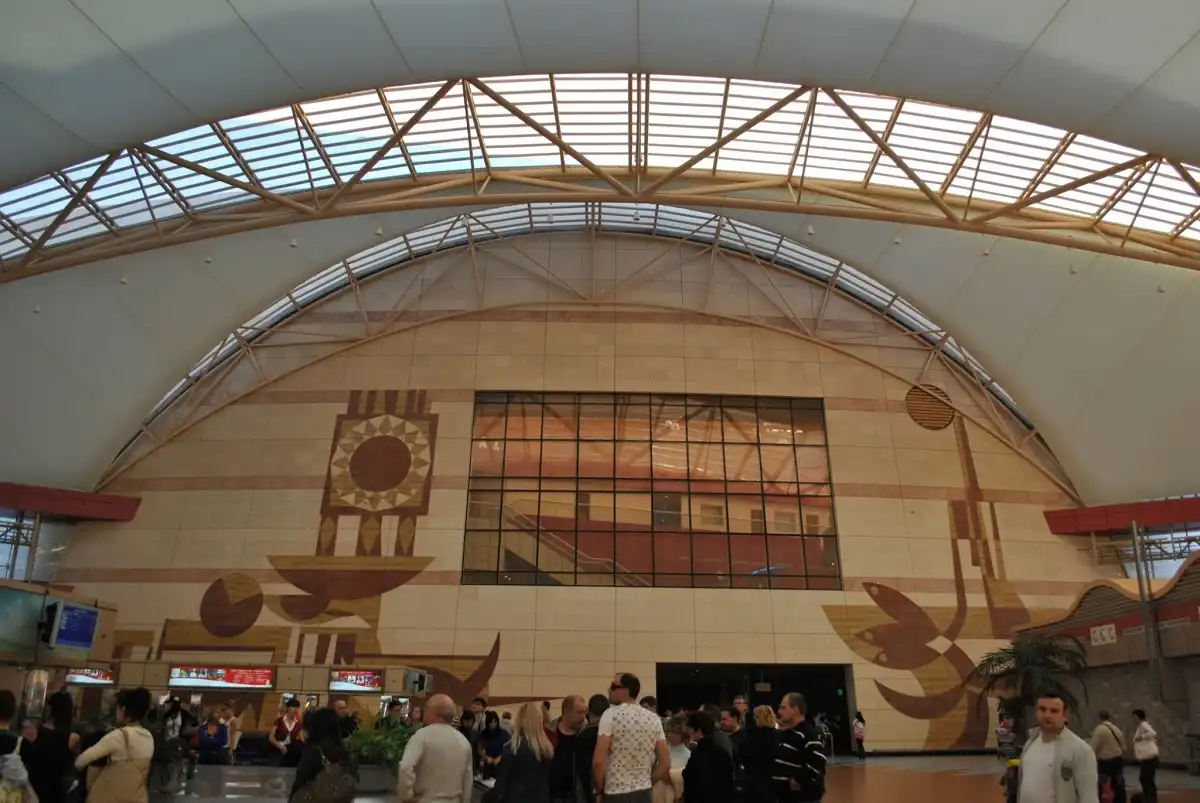
Abu Serga Church
[ez-toc]
One of the first churches in Egyptian history is the Abu Serga Church, also known as St. Sergius, St. Sergio, or Abu Serga. As some historians disagreed on the precise date of building in the middle of an old Roman fort of Babylon, it was either built in the fifth or the eighth century. The church was constructed in memory of two saints, the first of whom was an Egyptian named “Sergius” who perished in Syria at the start of the fourth century as a result of severe Christian persecution, and the second of whom was a slave named “Sergius” who served the Roman emperor “Maximilian.” Additionally, it is thought that the area was one of the stops the holy family made on their flight from “King Herod.” Around 750 AD, under the reign of Marwan the Second, the church was destroyed in the Fustat fire. The Abu Serga Church underwent numerous medieval reconstructions.
The Architecture of Abu Serga Church
The basilica-shaped church comprises a narthex, a nave, and two aisles that are divided from the nave by 12 columns with Corinthian capitals. It features three sanctuaries, one for each of which has an altar. Each altar has a dome, which is decorated with images of four evangelists, four angels, and scenes from holy texts. A wooden screen from the 13th century, numerous imposing icons, and an Abu Serga frieze from the 15th and 16th centuries can all be seen in the main sanctuary. The pulpit at Abu Serga, which is composed of magnificent marble and adorned with panels of entrancing ebony and ivory, is likewise located on the northeast side of the nave. The cave where the holy family hid while traveling through Egypt is one of the church’s most significant attractions. The cave features a baptistery, two aisles, a dome above the roof, and a nave. Every year on June 1st, the Christian community commemorates the holy family’s entry into the church of St. Sergio’s cave.



